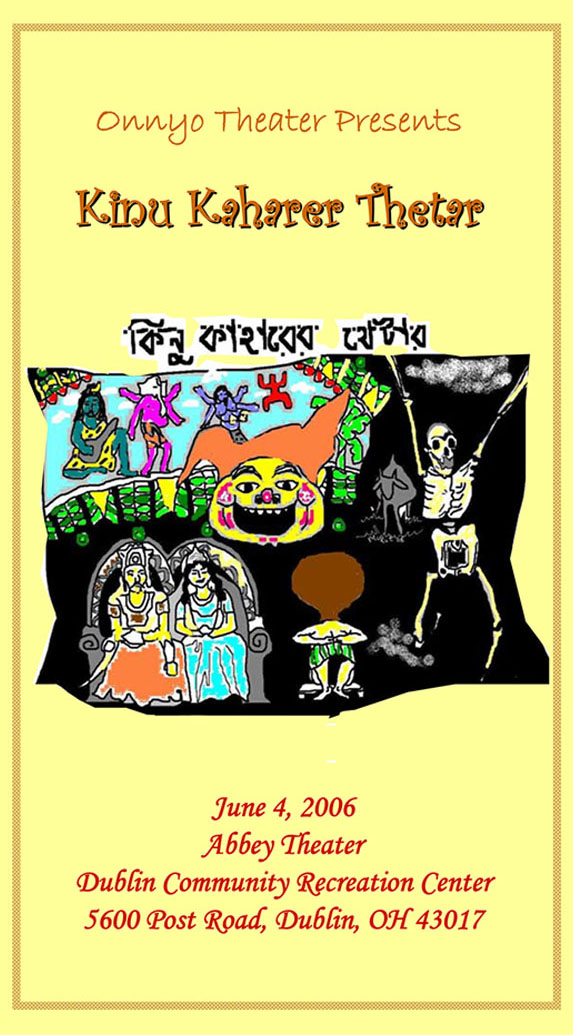Manoj Mitra’s Kinu Kharer Thétar portrays a rural dramatic troupe back in the British rule in India. This group led by Kinu Kahar (popularly known as Kinu Master) stages a political satire entitled Ghantakaner Pala before the early 20th century rustic audience. During the performance of Ghantakarner Pala , there are moments when the actors forget their dramatic roles and engage in self-revelation. For instance, Bodyinath, playing the role of Ujeer makes a lecherous move against Udashini, the prostitute in Kinu Kahar’s play. Again, in the middle of acting, Ujeer and Shantri start laughing at Pancha (playing the role of Laatshaheb) for his uncouth manner of dressing.
Essentially, Ghantakarner Pala is about the poor and naïve Ghantakarna who, losing his job to the quirks of the trickster Bhaanr, desperately seeks a job. In his dire straits, Ghantakarna’s only throwback is getting employed under the Raja as the ‘shajakheko officer’—- the self-proclaimed criminal of all the crimes committed in Putna in the several last years. The Raja conveniently appoints Ghantakarna for this task in order to win his political battle against Laatshaheb. The Laatshaheb, just like the Raja, shamelessly jockeys for political power and openly defies the Raja’s political maneuvers. The fallen woman, Udashini, is pitiful of Ghantakarna’s humiliating job as the king’s puppet, but Ghantakarna and his wife, Jagadamba enjoy the financial comforts offered by this employment. Despite the initial turmoil within her conscience, Jagadamba’s lust for wealth prevails and she lets the innocent Ghantakarna accept death sentence– a feat that enables Jagadamba rise to the position of the queen.
A policeman, ordered by the politically powerful men from the real world of Kinu Kahar suddenly intrudes and disallows the complete performance of Ghantakarner Pala. The masterstroke of Manoj Mitra’s satiric vision cannot be missed here for this intrusion reflects with more immediacy the dehumanization at work eating into the ugly political fabric of colonial India. And though Manoj Mitra’s play is set in a time different from ours, we enjoy its contemporary relevance.

